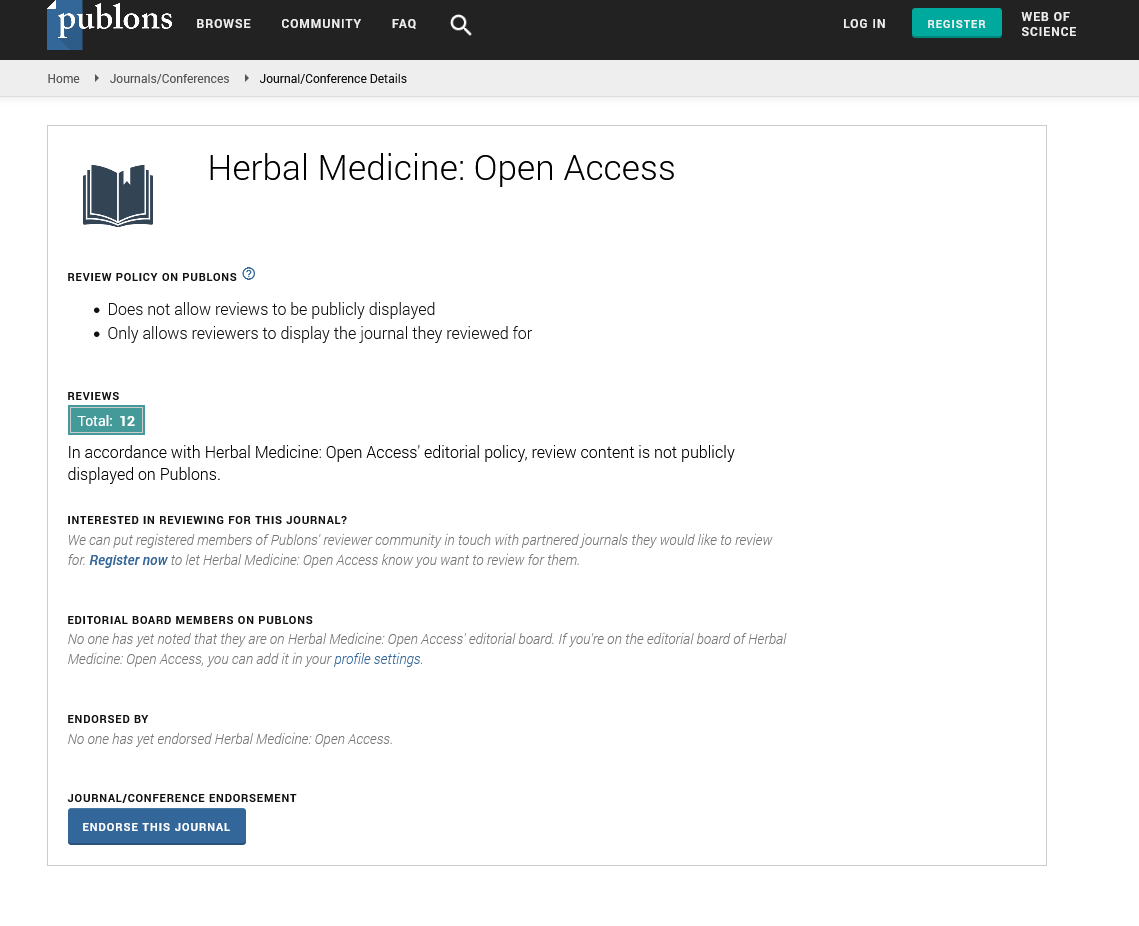Abstract
Traditional Eye Medicines in Tanzania: Products, Health Risk Awareness and Safety Evaluation
Background information: Eyes are delicate sensory organs necessary to give comfort for our life. Eye treatment requires special attention to avoid serious medical problems including blindness. Traditional eye medicines (TEM) are in most cases of unknown chemical nature, and vital parameters like sterility and pH are not controlled subjecting users to partial or total vision disability.
Aims: This work was aimed at systematic presentation of previously documented Tanzania TEM, documenting similar products, assessment of awareness of TEM health risks and safety evaluation.
Methodology: Data from previous studies was obtained from published journal articles and books. Ethno pharmacological study was conducted in Kigoma district by interviewing traditional healers and knowledgeable people guided by the structured questionnaire. Awareness on TEM associated health risks and later Safety evaluation was done based on pH values determination and culturing of lizard droppings on three culture media. Results: TEM reported in this study are 80 medicinal plants belonging to 42 families, animal excreta and unrefined salt. Among the interviewees, 65% were unaware of health risks associated with the use of TEM. The pH of the tested product was ranging between 2.5 and 6.57. Lizard droppings showed contamination of Gram positive and Gram negative bacteria and fungi.
Author(s):
Sheila Maregesi M, Bakari Kauke, Godeliver Kagashe and Reuben Kaali
Abstract | Full-Text | PDF
Share this

Google scholar citation report
Citations : 271
Herbal Medicine: Open Access received 271 citations as per google scholar report
Herbal Medicine: Open Access peer review process verified at publons
Abstracted/Indexed in
- Google Scholar
- JournalTOCs
- China National Knowledge Infrastructure (CNKI)
- Directory of Research Journal Indexing (DRJI)
- WorldCat
- Publons
- Secret Search Engine Labs
- Zenodo
Open Access Journals
- Aquaculture & Veterinary Science
- Chemistry & Chemical Sciences
- Clinical Sciences
- Engineering
- General Science
- Genetics & Molecular Biology
- Health Care & Nursing
- Immunology & Microbiology
- Materials Science
- Mathematics & Physics
- Medical Sciences
- Neurology & Psychiatry
- Oncology & Cancer Science
- Pharmaceutical Sciences


